Oil Lamp Typology
Typology is an archaeological method of classifying objects based on physical attributes such as size, shape, color, and material. Typological comparison can identify an object’s period and place of origin even when there is no archaeological context.
The oil lamps on display here are arranged and dated based on typological features that they share with other artifacts that were obtained by controlled excavations.

Oil Lamp
4th – 6th c. CE
This oil lamp is a typical product of the Eastern Mediterranean or Near East from between the fourth and sixth centuries CE. The oil would have been poured in the main compartment through the larger hole. The nozzle, which originally held a cloth or rope wick, shows much charring and abrasion from heavy use.
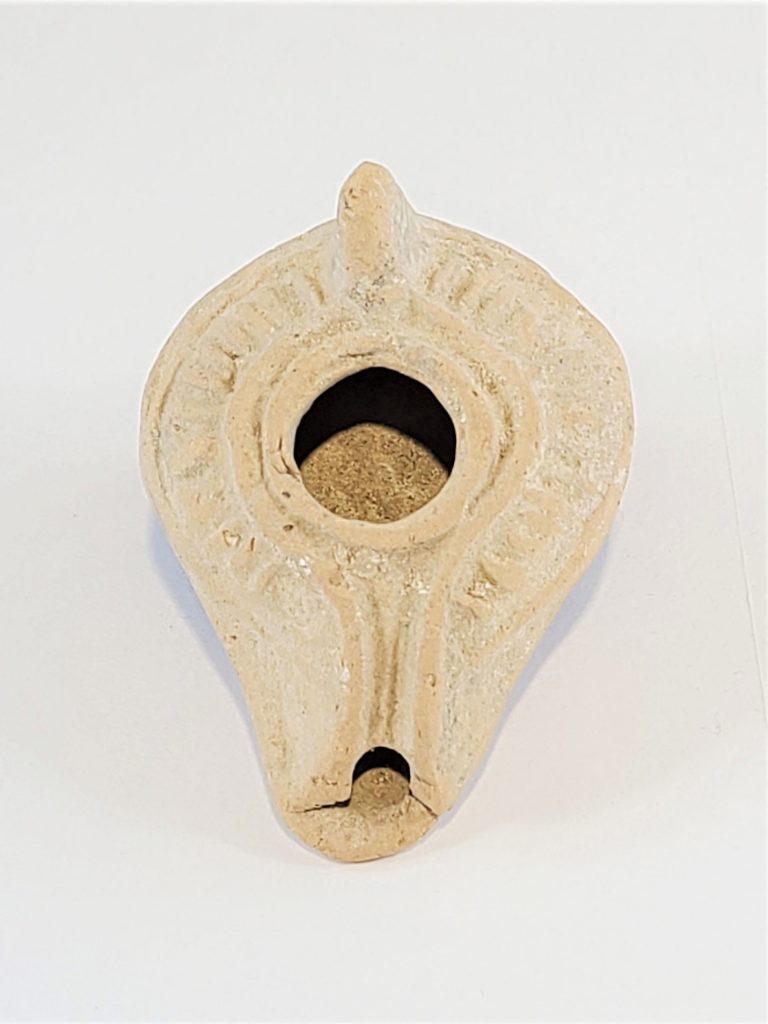
Oil Lamp
6th – 7th c. CE
In the Roman period, potters made oil lamps by pressing wet clay into two, then joining the top and bottom halves at the seam. The lopsided nozzle and clearly visible seam tell us that the potter didn’t quite perfectly align the halves of this lamp. Imperfections like these remind us that these objects were mass-produced, and quantity mattered more than quality.
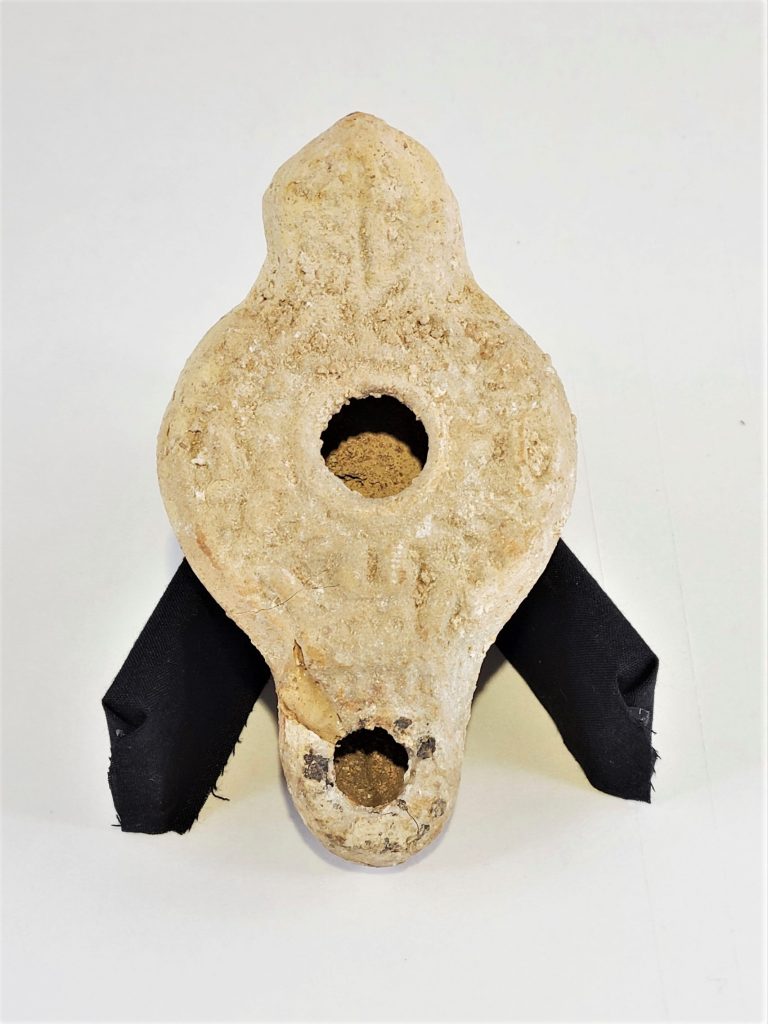
Oil Lamp
4th – 7th c. CE
Oil lamps frequently bear decorative stamp designs that would have been carved into the stone molds. Potters often copied the motifs on imported pieces, which helped to transmit common motifs like the dot-rosette base and the palm-leaf handle throughout the Mediterranean world.
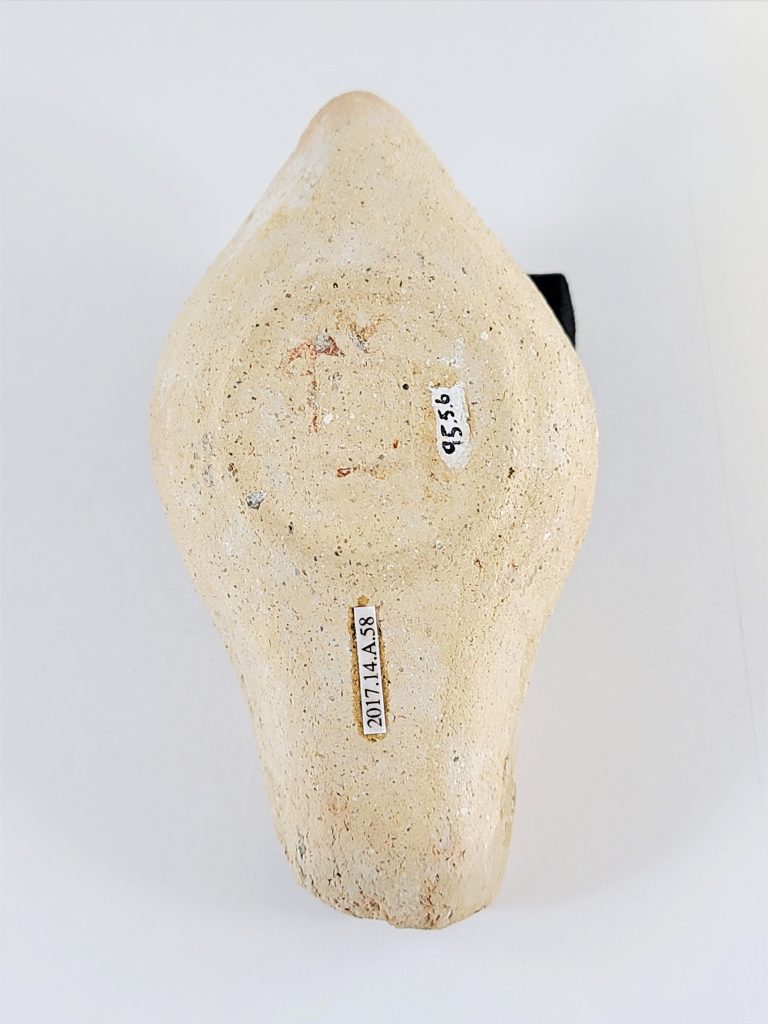
Oil Lamp
4th – 7th c. CE
The bottom of this lamp has a design resembling a Roman military standard, showing how grand imperial symbols could find a place on the humblest of objects.
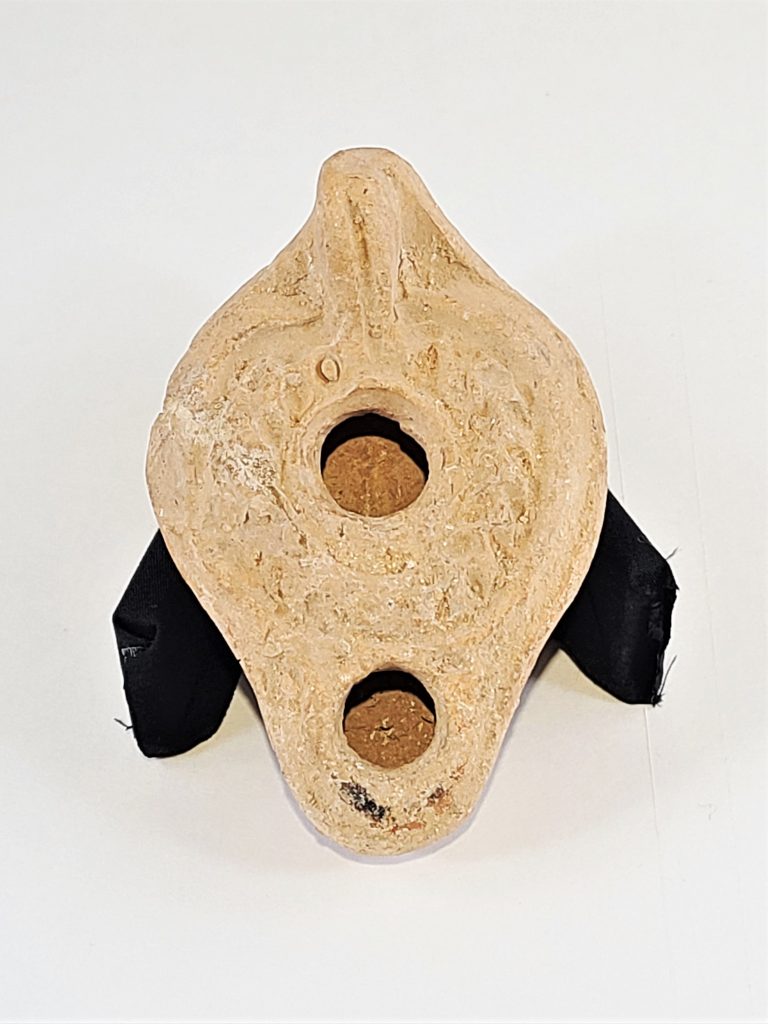
Oil Lamp
4th – 7th c. CE
The wreath around the fill-hole is a traditional Roman motif, but the two crosses on the underside of the lamp indicate that this piece is from the Byzantine period, when Christianity was the official religion of the empire.
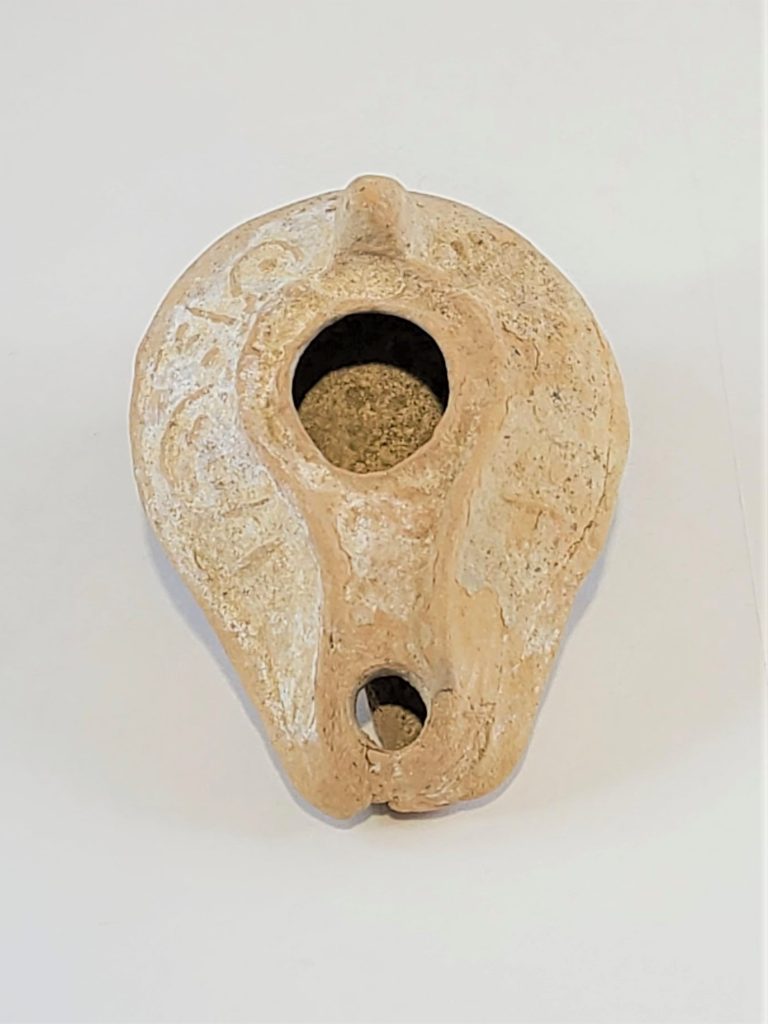
Oil Lamp
Post 7th c. CE
The markings on this lamp appear to be pseudo-Arabic script, which appears on many oil lamps of the Islamic period. Arabic calligraphy appears on many pots with messages of blessing or verses of poetry. For most of the illiterate makers and users of oil lamps, it didn’t matter much whether the elegant script was legible or merely decorative.

